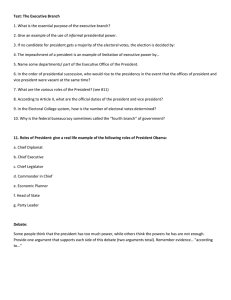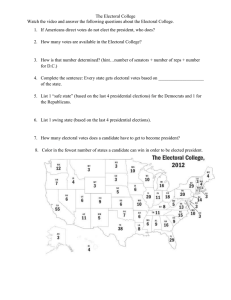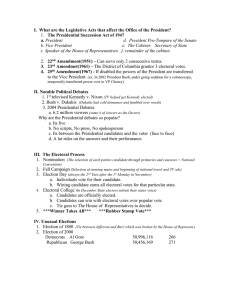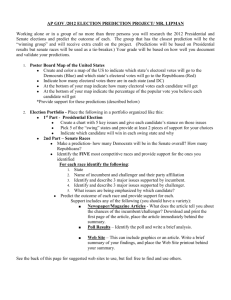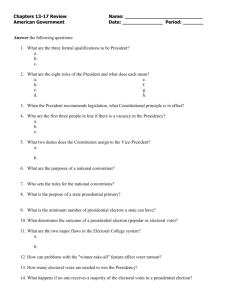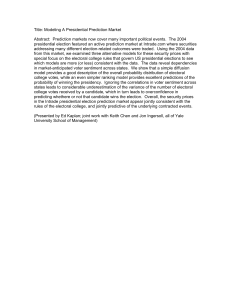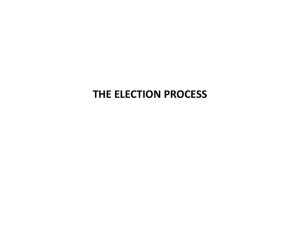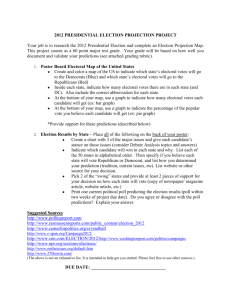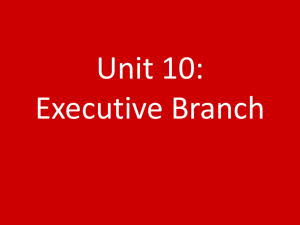Executive Branch
advertisement
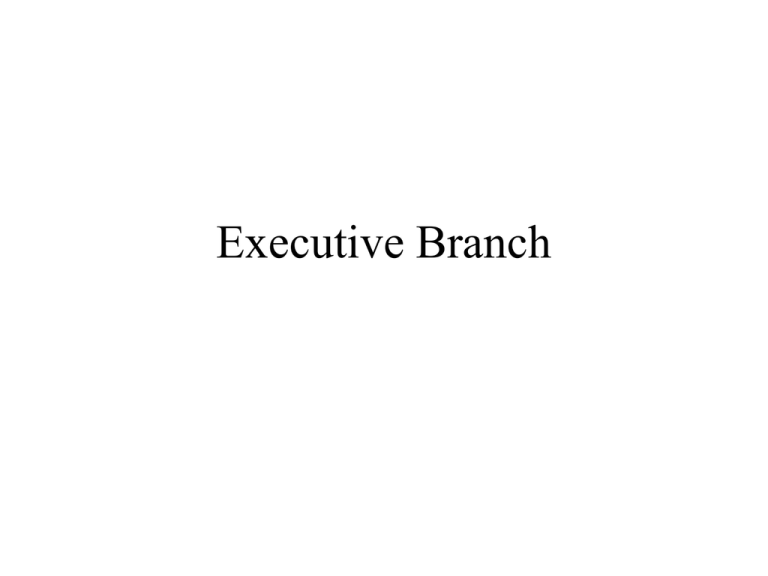
Executive Branch Objectives • Learn the qualifications, duties, and responsibilities of the Executive Branch of government. Article II Article II of the Constitution states that “The Executive Power shall be vested in a President of the United States of America.” Qualifications • A natural born citizen. • 35 years old. • A resident of the United States for 14 years. Duties of President The President has many duties: Chief diplomat, commander in chief, chief of state, and legislative leader. Chief Diplomat As chief diplomat the president directs foreign policy, appoints ambassadors, and negotiates treaties with other nations. Commander in Chief The President commands all of the nations military forces. They can go into action both at home and abroad. But there are limitations on lengths of deployment. Chief of State A symbolic role. The President represents our nation in greeting foreign leaders and diplomats. Legislative Leader He proposes to Congress legislation he wants to help carry out his policies and programs. Miller Ties Sun Min, Miller Class of 1985. Director of Admissions Bernard University, New York City. Presidential Ascendancy In case of the death, resignation, or disability of the president, the vice president will become the president. Presidential Ascendancy Speaker of the House President Pro Tempore of Senate Presidential Ascendancy • • • • • • • Cabinet positions in order of creation: State Treasury Defense Attorney General Interior Agriculture Cabinet The heads or secretaries who lead various departments and help the president in running the day to day activities of the country. Electing the President Presidential elections are held on the first Tuesday following the first Monday in November during leap year. All members of the House and one third of the Senate are also elected. Electoral College The Electoral College is a group chosen by the states to elect the President. Distribution of Members Just like representation in Congress. Each state has members in the Electoral College equal to its representation in Congress. For example, The state of Washington has 10 members in the House and 2 members in the Senate. Added together, Washington has 12 Electoral votes. Election Day Across America, people vote (popular vote). The candidate who receives the most popular votes wins that state’s electoral vote. Counting Electoral Votes In order to win the Presidency on election day a candidate must win a majority, 270 or more Electoral votes. What If? If no candidate wins 270 votes, then the House of Representatives creates a ballot with the top three vote getters on it. The House has decided the election twice (1800 & 1824).
